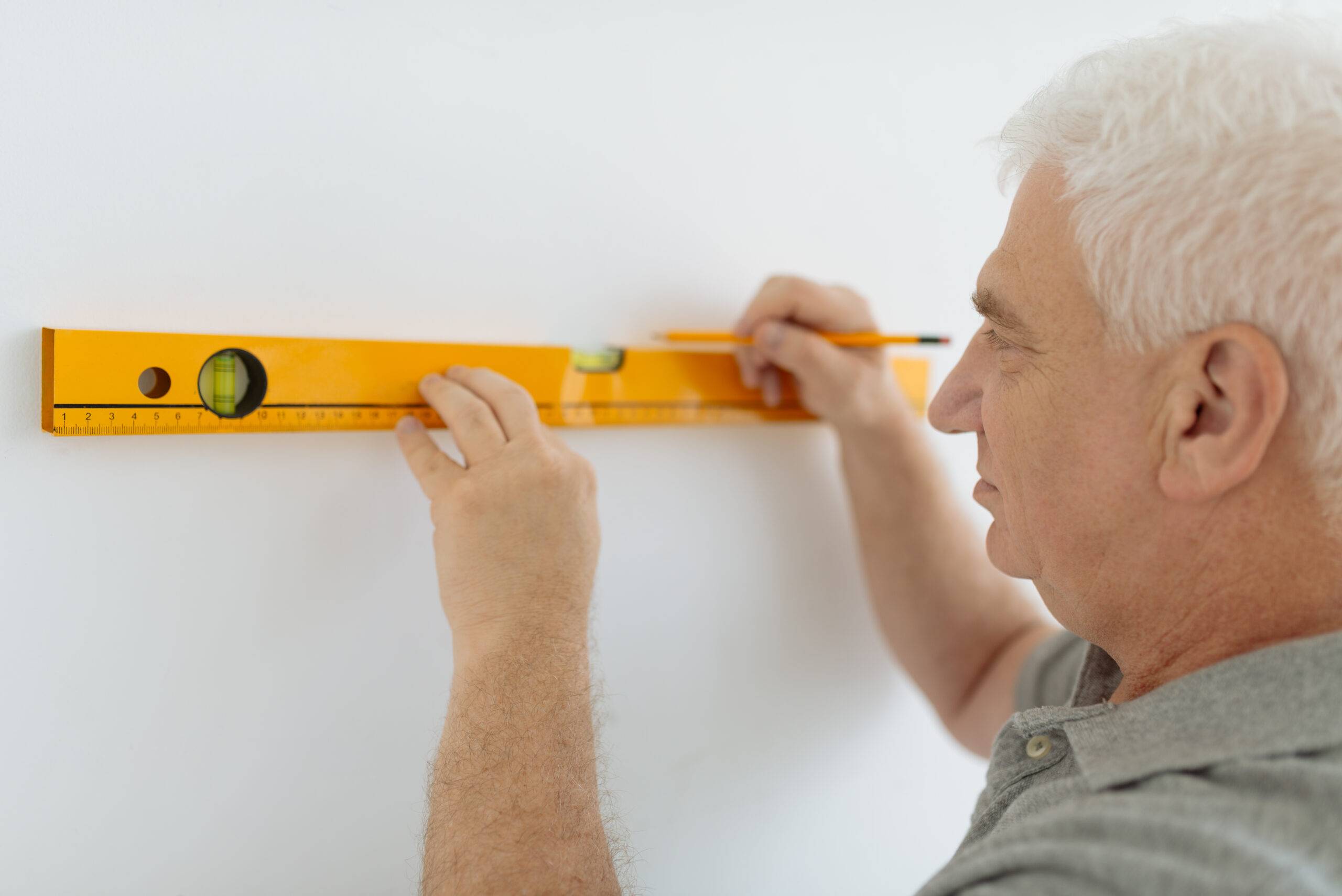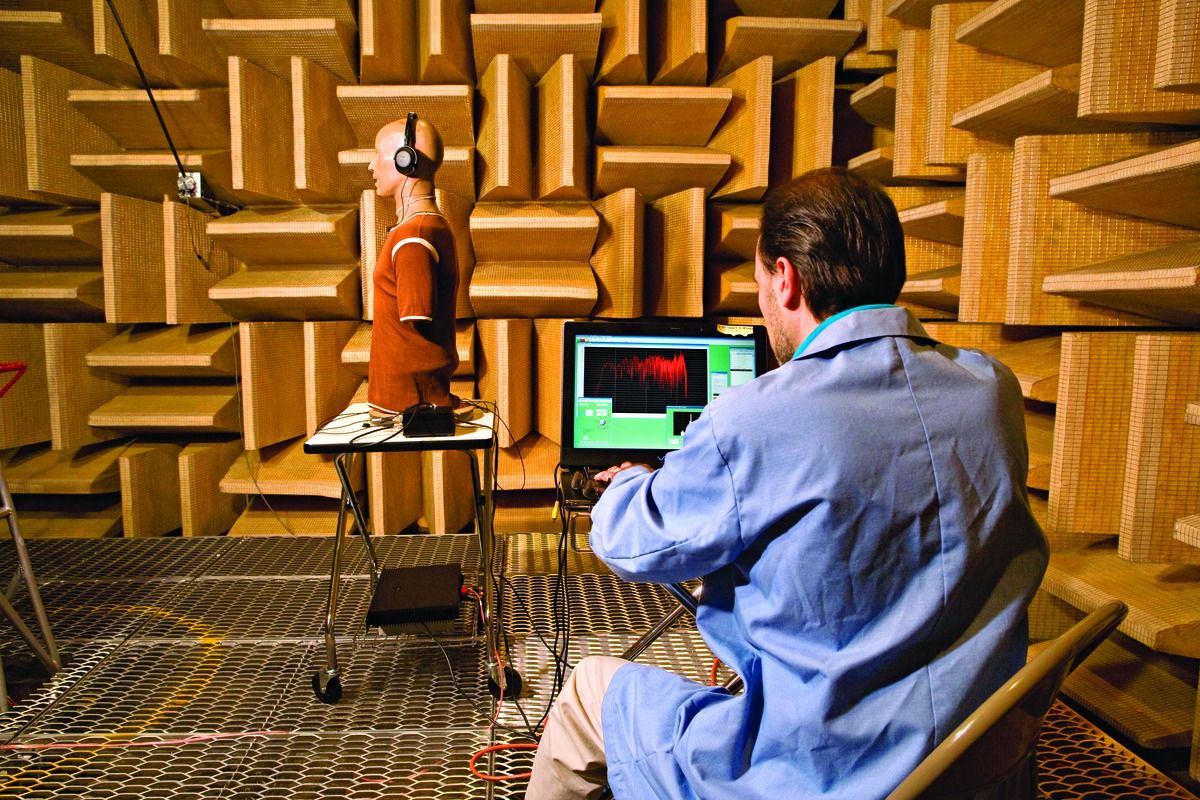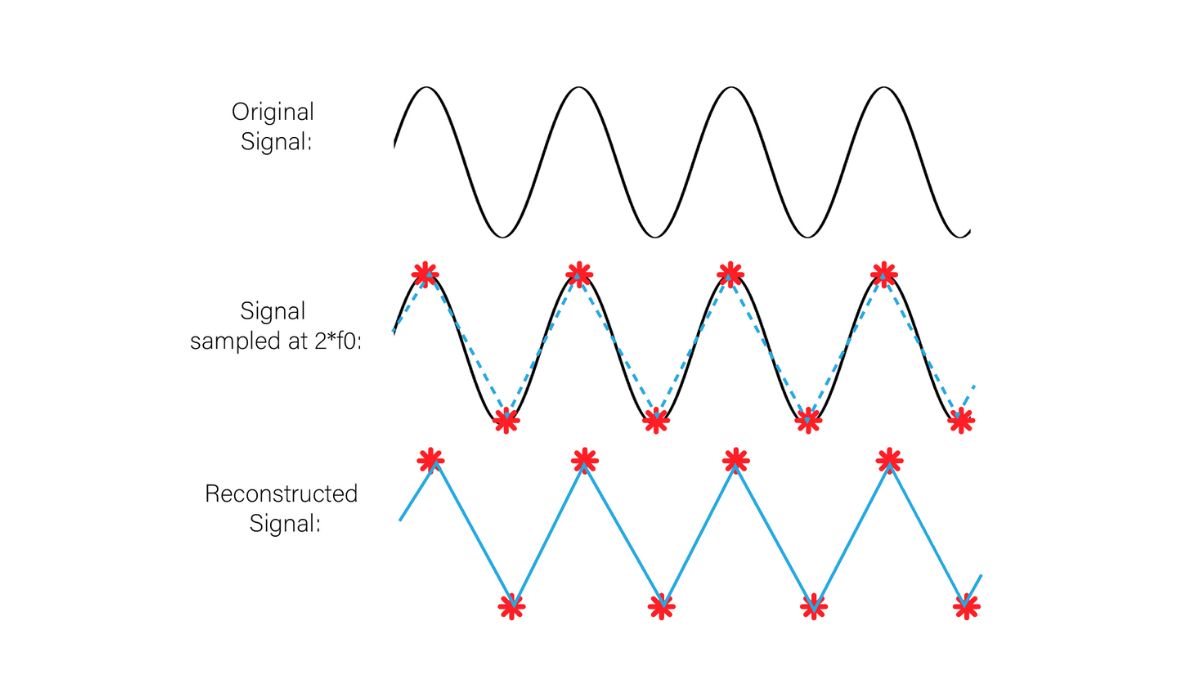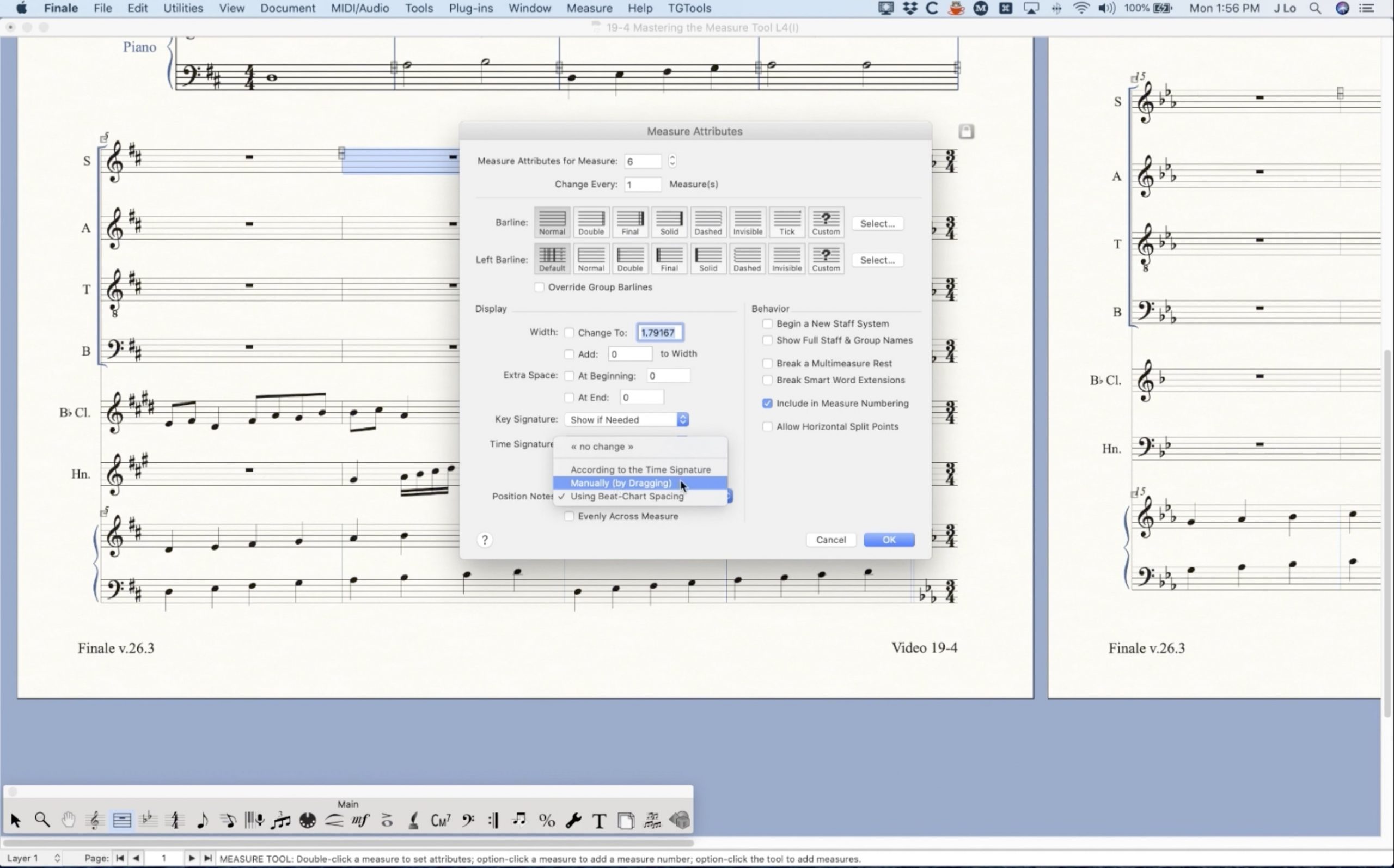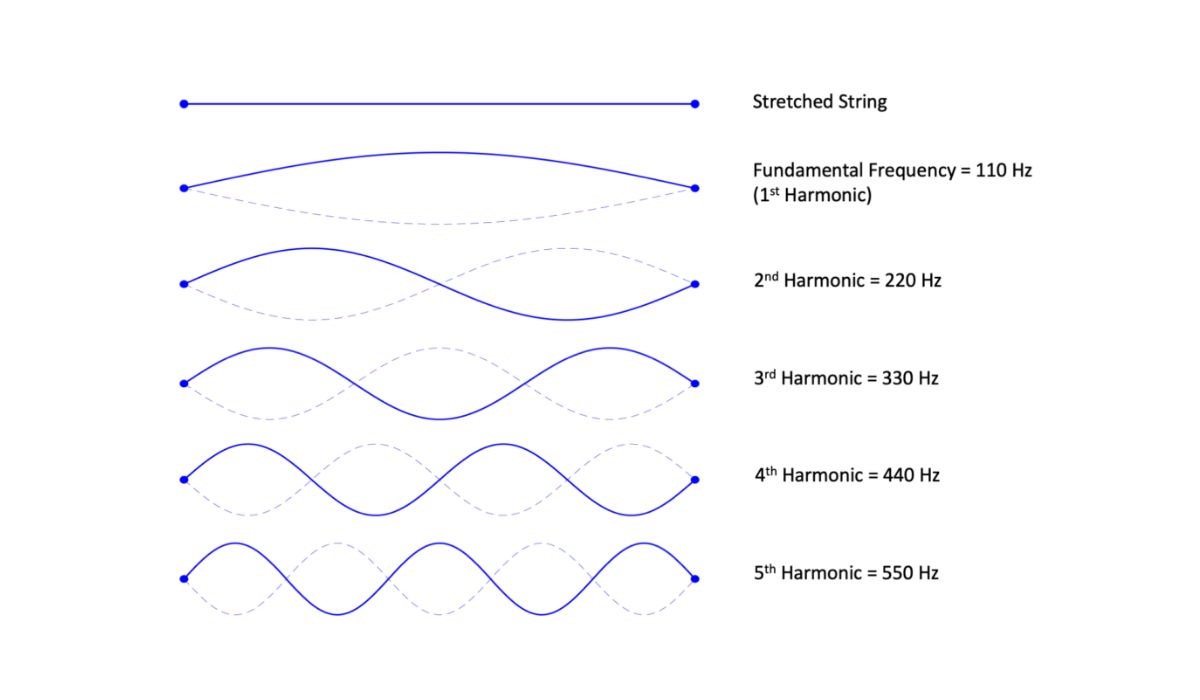Home>Events & Info>Frequency>How To Measure Frequency Response Of A Speaker


Frequency
How To Measure Frequency Response Of A Speaker
Published: February 18, 2024
Learn how to measure the frequency response of a speaker and optimize its performance. Understand the importance of frequency in speaker evaluation.
(Many of the links in this article redirect to a specific reviewed product. Your purchase of these products through affiliate links helps to generate commission for AudioLover.com, at no extra cost. Learn more)
Table of Contents
Introduction
When it comes to audio equipment, understanding frequency response is crucial for achieving the best sound quality. The frequency response of a speaker refers to its ability to reproduce sound across the audible spectrum, from low bass frequencies to high treble frequencies. This characteristic is a key determinant of a speaker's overall performance and fidelity, making it essential for audio enthusiasts, sound engineers, and music producers to have a comprehensive understanding of how to measure and interpret frequency response.
In this article, we will delve into the intricacies of frequency response measurement for speakers, providing a step-by-step guide on how to accurately assess and analyze this critical aspect of audio reproduction. By comprehensively exploring the process of measuring frequency response, readers will gain valuable insights into optimizing the performance of their speakers and achieving a superior listening experience.
Understanding the nuances of frequency response measurement involves a blend of technical knowledge and practical application, and this article aims to demystify this complex subject, making it accessible to both seasoned audio professionals and enthusiasts seeking to enhance their understanding of speaker performance.
Throughout this guide, we will cover the essential equipment needed for conducting frequency response measurements, the setup process, the actual measurement procedure, and the subsequent analysis of the results. By the end of this article, readers will be equipped with the knowledge and skills to confidently measure and interpret the frequency response of their speakers, empowering them to make informed decisions when selecting, positioning, and optimizing audio equipment for various listening environments.
Understanding Frequency Response
Frequency response, in the context of audio equipment such as speakers, refers to the range of frequencies that a speaker can reproduce and the manner in which it reproduces them. It is a critical indicator of a speaker’s performance and directly impacts the overall sound quality it delivers. The human auditory system can perceive frequencies ranging from approximately 20 Hz to 20,000 Hz, encompassing the bass, midrange, and treble regions of the audio spectrum. A speaker’s frequency response graph visually represents how it reproduces these frequencies, providing valuable insights into its tonal balance and sonic characteristics.
When examining a frequency response graph, the horizontal axis represents frequency in Hertz (Hz), while the vertical axis typically represents amplitude or level in decibels (dB). A flat frequency response curve indicates that the speaker reproduces all frequencies equally, without emphasizing or attenuating specific ranges. However, most speakers exhibit variations in their frequency response due to design considerations, room acoustics, and other factors. Understanding these variations is essential for optimizing the sound reproduction and achieving a balanced sonic output.
Key parameters derived from the frequency response graph include the low-frequency extension, which denotes the speaker’s ability to reproduce deep bass tones, and the high-frequency roll-off, which indicates the point at which the speaker’s output diminishes at the upper end of the frequency spectrum. Additionally, the presence of peaks and dips in the frequency response curve signifies areas where certain frequencies are emphasized or attenuated, influencing the speaker’s tonal characteristics and overall sonic signature.
Furthermore, understanding the concept of phase response, which describes the timing relationship between different frequencies reproduced by the speaker, is crucial for evaluating its transient response and imaging capabilities. A speaker with well-controlled phase response can accurately reproduce the spatial and temporal aspects of audio, resulting in a more immersive and lifelike listening experience.
By comprehensively grasping the intricacies of frequency response and its associated parameters, audio enthusiasts and professionals can make informed decisions when selecting, positioning, and calibrating speakers, ensuring optimal sound reproduction across diverse musical genres and listening environments.
Equipment Needed
Measuring the frequency response of a speaker requires the use of specialized equipment to capture and analyze its output across the audible spectrum. The following tools and devices are essential for conducting accurate frequency response measurements:
- Measurement Microphone: A high-quality measurement microphone with a flat frequency response and precise omnidirectional characteristics is indispensable for capturing the sound emitted by the speaker across various frequencies. These microphones are specifically designed for audio measurement applications and provide accurate results for frequency response analysis.
- Microphone Stand: A stable microphone stand is essential for positioning the measurement microphone at the designated measurement points in a consistent and repeatable manner. This ensures that the microphone remains stationary during the measurement process, minimizing variations caused by movement or vibration.
- Audio Interface or Measurement System: An audio interface or dedicated measurement system is required to connect the measurement microphone to a computer or specialized hardware for capturing and processing the audio signals. These devices offer high-fidelity audio capture and precise signal analysis capabilities, facilitating accurate frequency response measurements.
- Measurement Software: Specialized measurement software, often accompanied by calibrated measurement microphone systems, is utilized to generate frequency response graphs and analyze the captured audio data. These software tools provide advanced signal processing algorithms and graphical representations of the frequency response, enabling detailed analysis and visualization of the speaker’s performance.
- Test Tones or Pink Noise Generator: Test tones or pink noise signals are employed to drive the speaker at specific frequencies during the measurement process. These signals serve as reference stimuli for assessing the speaker’s output at different frequency points, allowing for the generation of a comprehensive frequency response graph.
Additionally, a quiet and controlled acoustic environment is essential for accurate frequency response measurements, as external noise and room acoustics can influence the captured audio data. Therefore, conducting measurements in a dedicated listening room or anechoic chamber can minimize environmental variables and ensure precise assessment of the speaker’s frequency response characteristics.
By employing the aforementioned equipment in a controlled setting, audio enthusiasts and professionals can conduct thorough and reliable frequency response measurements, gaining valuable insights into the sonic performance of speakers and optimizing their audio systems for superior sound reproduction.
Setting Up the Measurement
Prior to conducting frequency response measurements, it is essential to set up the measurement environment and position the equipment in a manner that ensures accurate and consistent results. The following steps outline the crucial aspects of setting up the measurement for assessing the frequency response of a speaker:
- Room Preparation: Select a quiet and acoustically controlled room for conducting the measurements, minimizing the influence of ambient noise and room reflections on the captured audio data. Ideally, the room should exhibit minimal acoustic anomalies and reverberation to facilitate precise frequency response analysis.
- Speaker Placement: Position the speaker to be measured in a location that represents its typical usage scenario, whether it be a stereo pair for music listening or a multi-channel configuration for home theater applications. Ensure that the speaker is placed on stable surfaces and oriented according to the manufacturer’s recommendations for optimal dispersion and imaging.
- Measurement Microphone Positioning: Place the measurement microphone at the primary listening position or the designated measurement points, maintaining a consistent distance from the speaker and adhering to standardized measurement protocols. The microphone should be positioned at ear level and oriented towards the speaker to capture the direct sound without significant reflections or room coloration.
- Calibration and Level Matching: Calibrate the measurement system and ensure that the microphone’s sensitivity and frequency response are accurately accounted for during the measurements. Additionally, match the output levels of the test tones or pink noise signals to ensure uniform drive levels across the frequency spectrum, preventing discrepancies in the captured audio data.
- Measurement System Configuration: Configure the measurement software or hardware system to capture the audio signals from the measurement microphone, specifying the frequency range and resolution for the frequency response analysis. Set the appropriate averaging and smoothing parameters to generate a clear and informative frequency response graph.
By meticulously setting up the measurement environment, positioning the equipment with precision, and calibrating the measurement system, audio enthusiasts and professionals can ensure the accuracy and reliability of the frequency response measurements. This meticulous preparation lays the foundation for comprehensive analysis and interpretation of the speaker’s frequency response characteristics, guiding informed decisions for audio system optimization and performance enhancement.
Conducting the Measurement
Once the measurement environment is meticulously prepared and the equipment is properly positioned and calibrated, the process of conducting frequency response measurements can commence. The following steps outline the essential procedures for accurately capturing the frequency response of a speaker:
- Signal Generation: Generate test tones or pink noise signals at specific frequencies across the audible spectrum, driving the speaker with consistent and controlled stimuli for each measurement point. These signals serve as reference inputs for assessing the speaker’s output at various frequency bands, enabling the comprehensive characterization of its frequency response.
- Audio Capture: Capture the sound emitted by the speaker using the calibrated measurement microphone and the designated measurement system. Ensure that the microphone remains stationary and oriented towards the speaker, maintaining a consistent distance and angle to capture the direct sound without significant room reflections or coloration.
- Frequency Sweep: Execute a frequency sweep by sequentially measuring the speaker’s output at incremental frequencies, covering the entire audible spectrum from low bass tones to high treble frequencies. This process generates a dataset of amplitude measurements at distinct frequency points, forming the basis for constructing the frequency response graph.
- Data Processing: Process the captured audio data using the measurement software or hardware system, applying signal analysis algorithms to derive the speaker’s frequency response characteristics. This involves averaging multiple measurements, applying smoothing functions, and generating a graphical representation of the frequency response curve based on the captured amplitude data.
- Quality Assurance: Verify the integrity and consistency of the captured measurements, ensuring that the frequency response graph accurately reflects the speaker’s output across the audible spectrum. Address any anomalies or irregularities in the data by conducting additional measurements or adjusting the measurement parameters to enhance the reliability of the frequency response analysis.
By meticulously executing the measurement procedures and adhering to standardized measurement protocols, audio enthusiasts and professionals can obtain precise and comprehensive frequency response data, enabling them to evaluate the speaker’s tonal balance, frequency extension, and overall sonic characteristics. This empirical assessment forms the basis for informed decision-making in speaker selection, system optimization, and audio performance enhancement, empowering individuals to achieve superior sound reproduction and fidelity in diverse listening environments.
Analyzing the Results
Upon completing the frequency response measurements, the next crucial step involves analyzing the captured data to gain insights into the speaker’s performance across the audible spectrum. The following aspects should be considered when interpreting and analyzing the frequency response results:
- Frequency Response Graph: Examine the generated frequency response graph, which visually depicts the speaker’s output levels across different frequencies. Identify any deviations from a flat response and observe the presence of peaks, dips, or irregularities in the curve, as these indicate tonal variations and frequency-specific characteristics of the speaker’s sonic output.
- Tonal Balance: Assess the tonal balance of the speaker based on the frequency response graph, observing the relative emphasis or attenuation of specific frequency ranges. A balanced tonal response signifies uniform reproduction of frequencies, while deviations indicate tonal coloration and sonic signature that may influence the speaker’s perceived sound quality.
- Low-Frequency Extension and High-Frequency Roll-Off: Identify the low-frequency extension, which denotes the speaker’s ability to reproduce deep bass tones, and the high-frequency roll-off point, where the speaker’s output diminishes at the upper end of the frequency spectrum. Understanding these parameters provides insights into the speaker’s bass response and treble extension, influencing its overall frequency coverage and sonic capabilities.
- Phase Response and Transient Behavior: Evaluate the phase response characteristics of the speaker to assess its transient behavior and imaging capabilities. Well-controlled phase response contributes to accurate spatial reproduction and transient fidelity, enhancing the speaker’s ability to convey the spatial and temporal aspects of audio content with precision and coherence.
- Room Interaction and Acoustic Considerations: Consider the influence of room acoustics and environmental variables on the captured frequency response data. Recognize that room interactions, reflections, and standing waves can affect the measured frequency response, necessitating considerations for room treatment and speaker placement to optimize the sonic performance in real-world listening environments.
By meticulously analyzing the frequency response results and interpreting the graphical representation of the speaker’s performance, audio enthusiasts and professionals can gain valuable insights into its sonic characteristics, tonal balance, and frequency coverage. This empirical understanding forms the basis for informed decision-making in speaker selection, system calibration, and acoustic treatment, enabling individuals to optimize their audio systems and achieve faithful sound reproduction in diverse listening spaces.
Conclusion
Measuring the frequency response of a speaker is a fundamental aspect of audio engineering and critical for achieving optimal sound reproduction. Through the comprehensive exploration of frequency response measurement, this guide has provided valuable insights into the intricacies of assessing and interpreting a speaker’s performance across the audible spectrum. By understanding the nuances of frequency response and its associated parameters, audio enthusiasts and professionals can make informed decisions when selecting, positioning, and calibrating speakers, ensuring faithful sound reproduction and superior sonic fidelity.
By meticulously setting up the measurement environment, positioning the equipment with precision, and calibrating the measurement system, individuals can ensure the accuracy and reliability of frequency response measurements. This meticulous preparation lays the foundation for comprehensive analysis and interpretation of the speaker’s frequency response characteristics, guiding informed decisions for audio system optimization and performance enhancement.
Upon completing the frequency response measurements and analyzing the captured data, individuals gain valuable insights into the speaker’s tonal balance, frequency extension, and sonic characteristics. This empirical understanding forms the basis for informed decision-making in speaker selection, system calibration, and acoustic treatment, enabling individuals to optimize their audio systems and achieve faithful sound reproduction in diverse listening spaces.
Ultimately, the ability to measure and interpret the frequency response of a speaker empowers individuals to make informed decisions when selecting, positioning, and optimizing audio equipment, leading to an enhanced listening experience and improved sonic performance across various musical genres and listening environments. By leveraging the knowledge and skills acquired through frequency response measurement, audio enthusiasts and professionals can elevate their audio systems to new heights, unlocking the full potential of their speakers and achieving unparalleled sound quality.
In conclusion, mastering the art of frequency response measurement is an indispensable skill for anyone seeking to elevate their audio experience and unlock the full sonic potential of their speakers, ultimately leading to a deeper appreciation of music and sound in all its richness and complexity.



